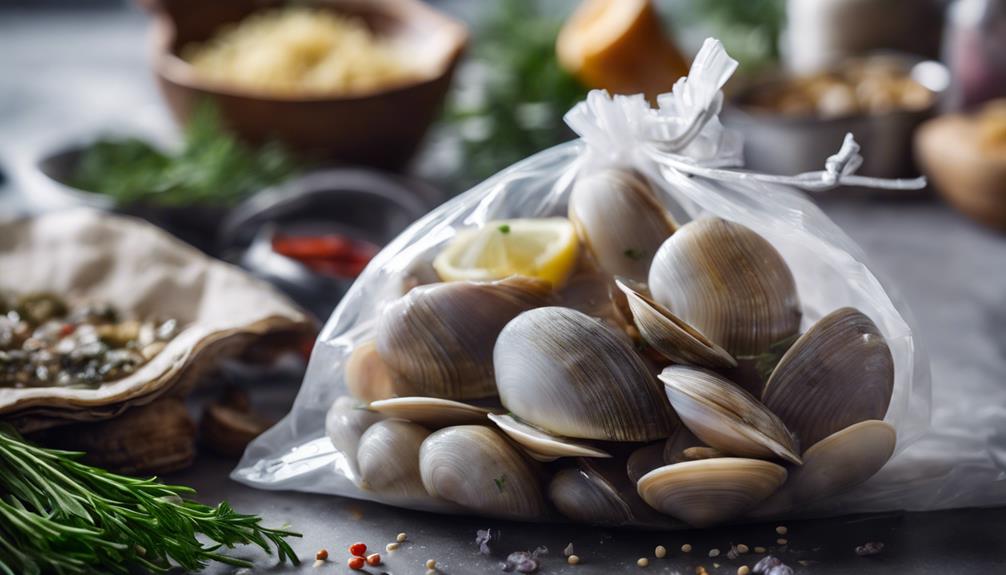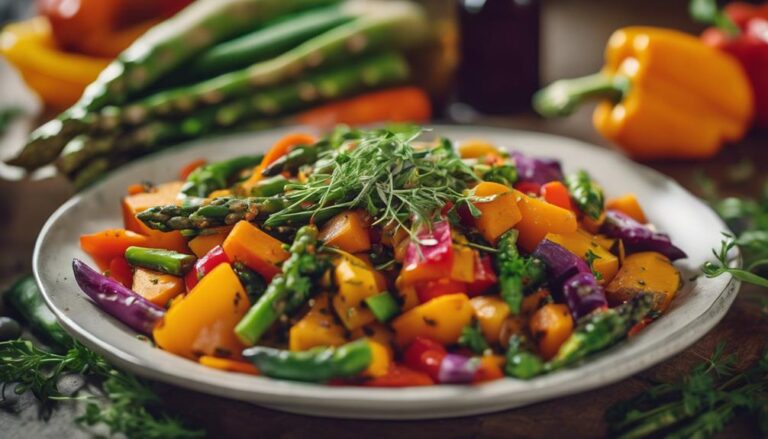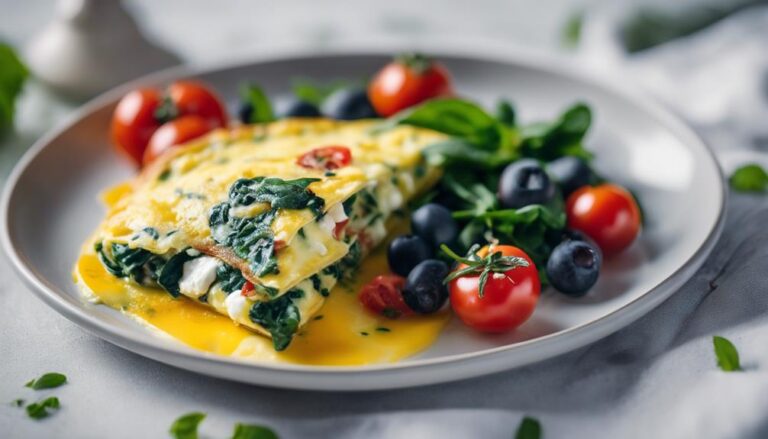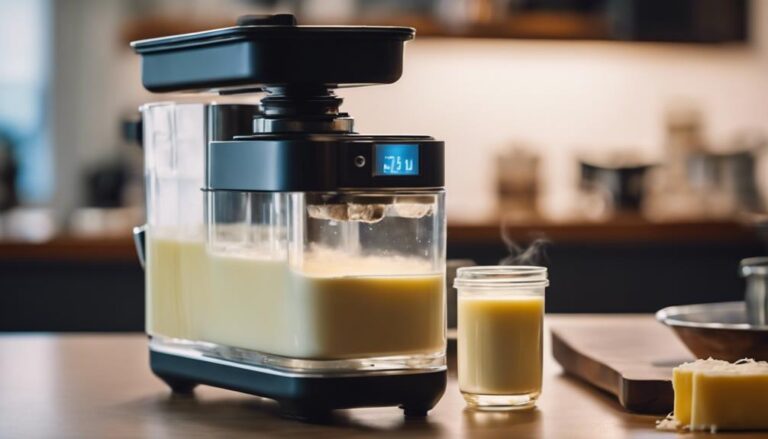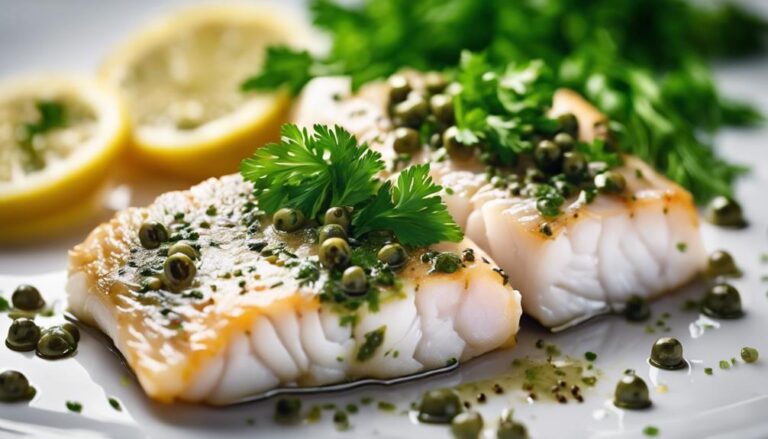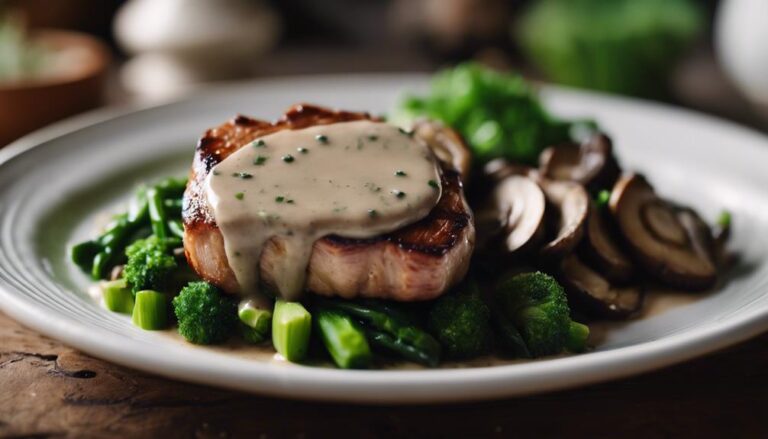Sous Vide Clam Chowder
Prepare to savor the ultimate tenderness and flavor explosion with sous vide clam chowder. Immerse fresh clams and ingredients in a perfectly controlled water bath for a luxuriously delicate taste experience. This modern take on the traditional soup elevates each element to culinary perfection. Delight in succulent seafood smothered in a luscious, savory broth that captures the essence of the sea. Experience a symphony of flavors with this innovative method, ensuring a dining experience like no other. Get ready to enhance your culinary adventures with this delectable twist on a beloved classic.
What You Will Learn Here
- Sous vide cooking method for precise temperature control
- Enhances flavors and textures of clams and potatoes
- Retains moisture and natural juices for a velvety chowder
- Requires vacuum-sealed bags for cooking in water bath
- Infuses ingredients with consistent heat distribution
Clam Chowder Origins
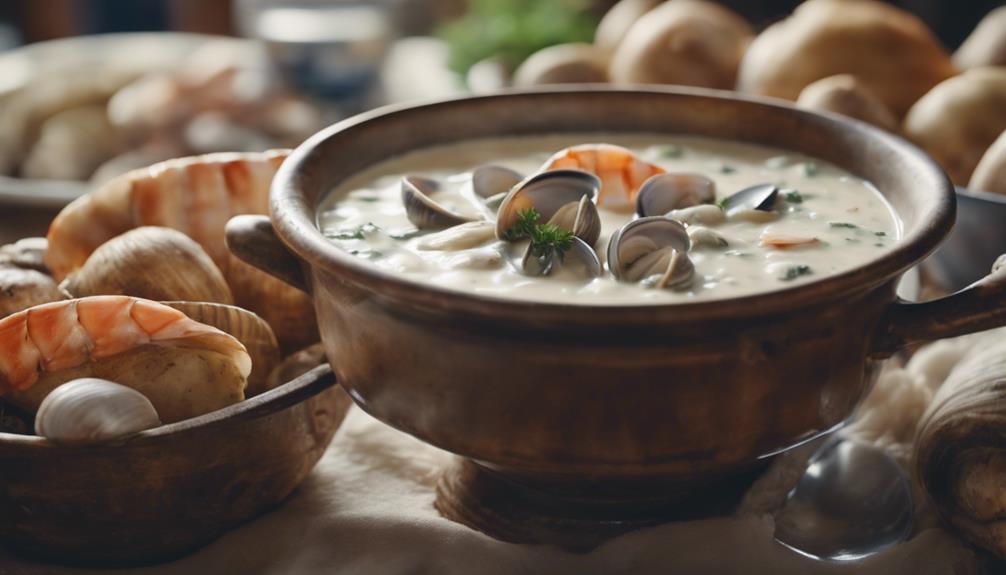
You may find it intriguing to explore the historical background of chowder, tracing its origins back to coastal England and France.
The evolution of clam chowder involves a fusion of traditional cooking methods with local ingredients like clams, creating a dish that has stood the test of time.
Understanding the roots of clam chowder can provide insight into how this beloved dish has transformed over the years, adapting to different culinary influences and preferences.
Chowder Historical Background
Originating from coastal regions of England and France, the rich history of chowder traces back to a time when hearty seafood stews were a staple among fishing communities. Chowder likely got its name from a cooking pot called a 'chaudière' in French or 'jowter's pan' in English. New England embraced this culinary tradition, adapting European fish stews with local ingredients like clams to create the famous New England clam chowder. Over time, dairy became the primary thickening agent, replacing soaked biscuits. Traditional chowder recipes were straightforward, featuring ingredients such as salted pork, potatoes, and clam juice. The evolution of chowder reflects a blend of culinary influences and practicality, making it a beloved comfort food today.
| Chowder History | Facts |
|---|---|
| Originated in England and France | Chowder name from 'chaudière' or 'jowter's pan' |
| New England adaptation | Dairy replaced biscuits for thickening |
| Simple traditional recipes | Ingredients like salted pork, potatoes, and clam juice |
Origin of Clam Chowder
Tracing back to coastal regions of England and France, the genesis of clam chowder as a hearty fish stew enriched with local ingredients like clams signifies a fusion of culinary traditions.
The term 'chowder' possibly derived from either a cooking pot or fishmonger term, showcasing its deep-rooted history in seafood cuisine.
When New England embraced this European concept, they added their twist by incorporating fresh clams, leading to the creation of the beloved New England clam chowder.
Initially, clam chowder recipes were straightforward and quick to prepare, evolving over time to include dairy as the primary thickening agent instead of soaked biscuits.
This evolution showcases the adaptability and creativity that has characterized clam chowder throughout its culinary journey.
Evolution of Chowder
The evolution of chowder, particularly the origins of clam chowder, showcases a rich tapestry of culinary adaptation and innovation rooted in coastal traditions. New England played a pivotal role in transforming European fish stews into the beloved clam chowder we're familiar with today.
The traditional dish has evolved from simple recipes to more complex variations, with dairy becoming a key thickening component over time. The name 'chowder' likely stems from historical cooking vessels or fish market terminology, shaping the essence of traditional chowder recipes.
Balancing the sweetness of pork with the bitterness of clams, while infusing flavors from black pepper, bay leaves, celery, and onions, is essential in capturing the authentic taste of this classic New England delicacy. Understanding the origins and evolution of clam chowder is fundamental in mastering the art of preparing this iconic dish.
Clam Chowder Potato Variations
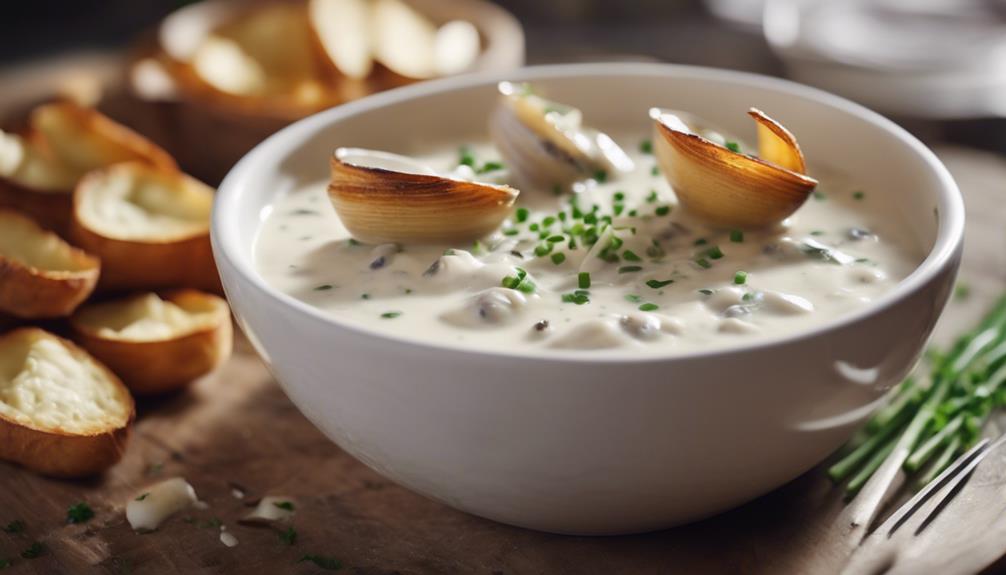
For a dynamic twist on traditional clam chowder, contemplate experimenting with different potato varieties to elevate the texture and flavor profile of this classic dish. When it comes to clam chowder, the type of potatoes you choose can make a significant difference in the final result.
Here are some potato variations to ponder:
- Russet Potatoes: These potatoes are perfect for thickening clam chowder because of their high starch content. When cooked, russet potatoes break down easily, creating a velvety and hearty consistency to the chowder.
- Red Potatoes: If you prefer a firmer texture and a pop of color in your clam chowder, red potatoes are an excellent choice. They hold their shape well when cooked, adding a bit of bite to each spoonful.
- Yukon Gold Potatoes: For a creamy and smooth clam chowder, opt for Yukon gold potatoes. Their naturally buttery texture adds a luxurious feel to the dish, making it a comforting delight for your taste buds.
Experimenting with these potato variations allows you to customize your clam chowder to suit your personal preferences, creating a unique and flavorful recipe every time.
Chowder Recipe Variations
Explore new culinary horizons with creamy Clam Chowder Recipe, tantalize your taste buds with the richness of a Bacon-infused Clam Chowder Recipe, or add a satisfying crunch with Clam Chowder With Cornbread Croutons.
Each variation offers a unique twist on the classic chowder, allowing you to customize your dish to suit your preferences and surprise your palate with exciting flavors.
Whether you prefer a traditional approach or enjoy experimenting with unconventional ingredients, these variations are sure to elevate your chowder experience to a whole new level.
Creamy Clam Chowder Recipe
Creamy clam chowder, a decadent and beloved seafood soup, offers a luscious blend of clams, potatoes, onions, and cream. When preparing this classic dish, attention to detail is crucial to achieving a perfectly balanced and satisfying flavor profile.
Here are some essential tips for crafting a delightful creamy clam chowder:
- Choose Quality Clams: Opt for fresh clams to guarantee the best taste and texture in your chowder.
- Balance Flavors: Strike a harmonious balance between the sweetness of the clams, the creaminess of the base, and the earthiness of the potatoes and onions.
- Texture Matters: Pay attention to the consistency of your chowder; it should be thick and creamy, with tender chunks of clams and potatoes for a delightful eating experience.
Bacon-infused Clam Chowder Recipe
Infusing your clam chowder with crispy bacon adds a delightful smoky depth that enhances the rich flavors of this classic seafood soup. When preparing a bacon-infused clam chowder recipe, keep in mind the following:
- Balanced Flavors: The smoky notes from the bacon perfectly complement the briny taste of the clams, creating a harmonious blend of flavors in the chowder.
- Richness: The rendered bacon fat not only infuses the chowder with a deep, savory richness but also adds a velvety texture to the broth, making each spoonful a luxurious experience.
- Textural Contrast: The crispy bacon bits sprinkled on top provide a satisfying crunch that contrasts beautifully with the tender clams and creamy base, elevating the overall dining experience.
Clam Chowder With Cornbread Croutons
Enhance your clam chowder experience by introducing a delightful crunch with the addition of cornbread croutons, creating a satisfying textural contrast to the creamy soup.
- Cornbread Perfection: The cornbread croutons are made by toasting cubed cornbread until crispy, adding a savory-sweet crunch to each bite.
- Flavorful Seasoning: Season the cornbread croutons with herbs like thyme, spices like paprika, or garlic powder to enhance the depth of flavor in your chowder.
- Complementing Ingredients: The combination of the rich clam chowder, tender potatoes, and chopped clams with the savory cornbread croutons results in a harmonious blend of flavors and textures that will leave your guests impressed with this creative twist.
Chowder Thickening Techniques
To achieve a perfectly thickened clam chowder, consider utilizing a roux made from flour and butter, enhancing the traditional richness of the dish.
You may also explore cornstarch as a thickening agent, providing a smooth consistency without altering flavors noticeably.
Another approach worth trying is the potato puree method, where blending cooked potatoes into the chowder can lend a velvety thickness while adding a subtle earthy undertone.
Roux for Thickening
For thickening clam chowder to a creamy consistency, start by preparing a roux, a classic mixture of flour and fat that adds smooth texture and richness to the soup. Roux acts as a binding agent, helping to thicken the chowder without altering its flavor profile.
When making roux for clam chowder, cook equal parts flour and fat together until they form a smooth paste. The color of the roux can range from white to dark, depending on how long you cook it. To avoid lumps in your chowder, whisk the roux in gradually, ensuring it incorporates evenly.
Different types of roux, such as white, blond, and brown, offer varying levels of thickening power and flavor intensity, so choose the one that best complements your clam chowder.
Cornstarch as Thickener
Cornstarch serves as a versatile and gluten-free thickening agent commonly employed in chowder recipes to achieve a clear broth without impacting the dish's flavor profile. When using cornstarch in your chowder, it's important to mix it with cold water before adding it to the pot. This helps guarantee lumps are avoided and ensures even thickening throughout the dish. Check out the table below for a quick comparison of cornstarch as a thickener in chowder:
| Aspect | Cornstarch |
|---|---|
| Gluten-Free | Yes |
| Thickening Speed | Quick |
| Flavor Impact | None |
| Mixing Requirement | Should be mixed with cold water before adding to chowder |
Cornstarch's neutral taste allows the true flavors of your chowder ingredients to shine, making it a convenient and effective thickening option for your next batch of chowder.
Potato Puree Method
Consider incorporating potato puree as a natural thickening agent in your clam chowder to achieve a creamy texture and enhance the overall flavor without the use of flour or cornstarch.
Boiled and mashed potatoes can be added gradually to reach the desired consistency in the chowder. The starch in the potatoes not only thickens the chowder but also adds a depth of flavor that complements the clams beautifully.
This method is particularly beneficial for individuals seeking gluten-free thickening options in their chowder recipes. By using potato puree, you can enjoy a rich and velvety clam chowder that's hearty and satisfying, making it a perfect choice for a comforting meal on any occasion.
Final Thoughts
In reflecting on the sous vide clam chowder preparation process, one can appreciate the depth of flavor and tenderness achieved through this precise cooking method.
Sous vide technology guarantees that the clams are cooked to perfection, preserving their natural juices and flavors without the risk of becoming rubbery.
This results in a chowder that boasts a rich and complex taste profile, with the seafood essence shining through in every spoonful.
Frequently Asked Questions
Can You Sous Vide Clams?
You can absolutely sous vide clams! This cooking technique allows for precise temperature control, retaining the natural flavors of the seafood. Seal them in a bag with seasonings for a flavorful infusion. Enjoy perfectly cooked clams in your seafood recipes.
Can You Overcook Clam Chowder?
You can overcook clam chowder, resulting in tough clams and a grainy, unpleasant consistency in the creamy broth. Proper timing is key to maintain tender clam texture and flavorful broth. Watch closely for perfect flavor development.
How Do You Thicken Clam Chowder After It's Cooked?
To achieve a creamy consistency in clam chowder after it's cooked, explore thickening techniques like using a cornstarch slurry, creating a roux with butter and flour, incorporating mashed potatoes, simmering uncovered, or adding sour cream/heavy cream.
What Is the Difference Between Clam Chowder and New England Clam Chowder?
New England clam chowder is creamy, originating from the East Coast, while regular clam chowder, often associated with the West Coast, may have a tomato base. The key distinction lies in the use of dairy in New England chowder.
Conclusion
Indulge in the rich and flavorful world of sous vide clam chowder, where tender clams and savory potatoes come together in a creamy and comforting soup.
With endless variations and techniques to try, you can explore the depths of this classic dish and create a masterpiece of your own.
So fire up your sous vide machine and get ready to savor every spoonful of this delicious clam chowder. It's a culinary adventure you won't want to miss.
